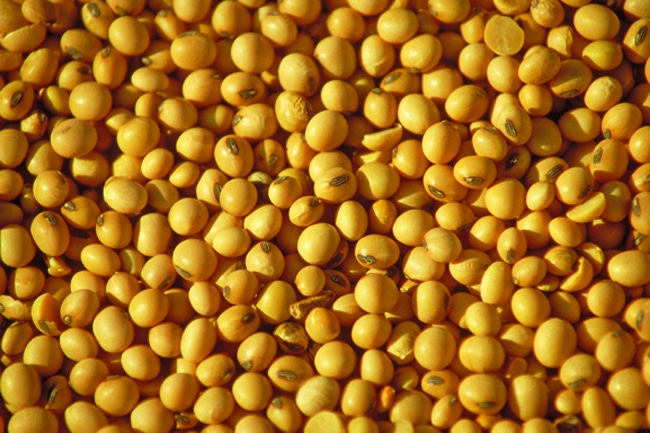July 23, 2012

Much of the recent attention in commodity markets, at least in the popular press, has focused on the U.S. corn crop and the potential impact of drought conditions on production and prices. The focus has been warranted since corn is the largest U.S. crop; corn is used in a wide variety of food, feed, and industrial products; and corn yields are most susceptible to drought conditions.
As the growing season progresses and adverse weather conditions persist over large areas, more attention is being focused on the U.S. soybean crop. The importance of the size of the U.S. crop is magnified by the small South American harvest earlier this year. The USDA estimates that crop at 4.2 billion bushels, which is 16% smaller than the record crop of 2011. The USDA expects South America to maintain a large export presence, however, by sharply reducing inventories over the next year. Even so, the pace of exports of U.S. soybeans remains stronger than normal for this time of year.
The USDA now projects 2011-12 marketing year exports at 1.34 billion bushels, 65 million more than projected in March. With only six weeks left in the marketing year, exports need to total 81 million bushels, 13.2 million per week, to reach the USDA projection. Export inspections for the four weeks ending July 17 averaged 16.1 million. As of July 12, USDA reported unshipped export sales for the current year at 171.5 million bushels. It appears that exports may marginally exceed the USDA projection.
USDA projects the domestic soybean crush during the current marketing year at 1.675 billion bushels, 27 million (1.6%) more than crushed last year. The Census Bureau no longer reports monthly soybean crush, but the National Oilseed Processors Association reported that its members crushed 2.1% more soybeans during the first 10 months of the year than during the same period last year. From February through June, the crush exceeded that of last year by 10%. It appears that crush during the final two months of the year needs to be about 1% less than that of a year ago in order to reach the USDA projection for the year. Like exports, crush may exceed the projection, leading to slightly smaller stocks at the end of the current marketing year than now being projected.
What about production? In the July 11 WASDE report, USDA judged the U.S. average yield potential at 40.5 bu. and production at 3.05 billion bu., about equal to last year’s crop. Crop conditions have declined sharply during July, but there is still a perception that average yields could still be “decent” if weather turned more favorable from now through August. In the driest areas, however, permanent yield losses may have already occurred as plant size and pod numbers have been cut.
A forecast of U.S. average yield based on trend yields since 1986, percentage of the crop planted late, and the percentage of the crop currently rated in good or excellent condition is near 39.4 bu. The forecast would change about 0.2 bu. for each 1% change in the percent of the crop rated in good or excellent condition.
USDA will release the first survey-based yield and production forecasts Aug. 10. Those forecasts may be a little less reliable than normal as surveyed producers have more difficulty in judging yield potential and NASS has more difficulty projecting yields from plant and pod counts. A yield of 39.4 bu., using the NASS forecast of harvested acres, would result in a crop of 2.967 billion bu. and would require soybean consumption in the year ahead to be about 105 million bu. less than during the current year. At the same time, outstanding export sales for the upcoming marketing year are 70% larger than sales of a year ago and already account for one third of USDA’s export projection for the year. Export demand will ultimately depend on China’s appetite for soybeans and the size of the South American crop next year.
November 2012 soybean futures increased 36% from the low on June 4 to the high of $16.91 on July 23. Prospects for more normal precipitation levels in some northern and eastern growing areas, along with renewed concerns about European financial conditions, resulted in some modest price weakness during the session on July 23.
As indicated last week, the window of time for expecting a peak in soybean prices extends from now through November, with a peak by September appearing most likely. Based on our yield expectations, it does not appear that prices are yet high enough to trigger the necessary decline in consumption. However, with considerable production and demand uncertainty it is difficult to anticipate the timing and magnitude of a price peak. Pricing increments of old and new crop soybeans over the next several weeks still appears to be a prudent strategy.
You May Also Like




